Critical Components
The building instructions described on this site are specific to the arena our lab uses for our rodent models (generally using male Lewis rats). EDGAR's design, however, can be adapted for any rodent model. If adapting our arena design, be sure to consider the following critical components:
Arena Dimensions
- Length of animal enclosure should allow at least four complete gait cycles
- Width of the animal enclosure should permit the animal to walk comfortably in a near straight path without touching the walls
- Height of the animal enclosure should prevent animals from climbing out
- The space between force links on force platforms needs to fit the width of the animal enclosure without deterioration of accurate force plate readings
- The length and width of the supporting arena structure must allow the mirror to lie at a 45° angle
Required Materials
- High-speed camera capable of recording at least 250 frames per second (FPS) without interlacing
- Force links sensitive enough to measure expected force ranges
- LED lights on DC power - LED lights do not flicker or give off excessive heat, a critical component for high-speed videography of rodent gait
View of the Animal
- There must be a clear view of the animal's feet in both the lateral and ventral views
- No obstructions can be in either view (e.g. cables, force links, screw caps, etc.)
- The front wall of the animal enclosure should be raised so it does not block the lateral view of the animal's feet
- Suggestions to achieve this sightline:
- Cut the acrylic sheet for the front wall shorter than the other sheets so it does not touch the floor
- Prop the front of the animal enclosure so it is tilted backward, leaving a gap in the front
- Suggestions to achieve this sightline:
- The back wall of the animal enclosure should be entirely flush with the floor so the background is consistent across the height of the animal, with no change in color behind the feet
- The background color of the animal enclosure should provide a strong contrast to the color of your animal's fur
- For example, our animals are white, so we use a black background
- A bright green, such as Chroma key green (green screen green), is often useful for animals with brown or patterned fur

